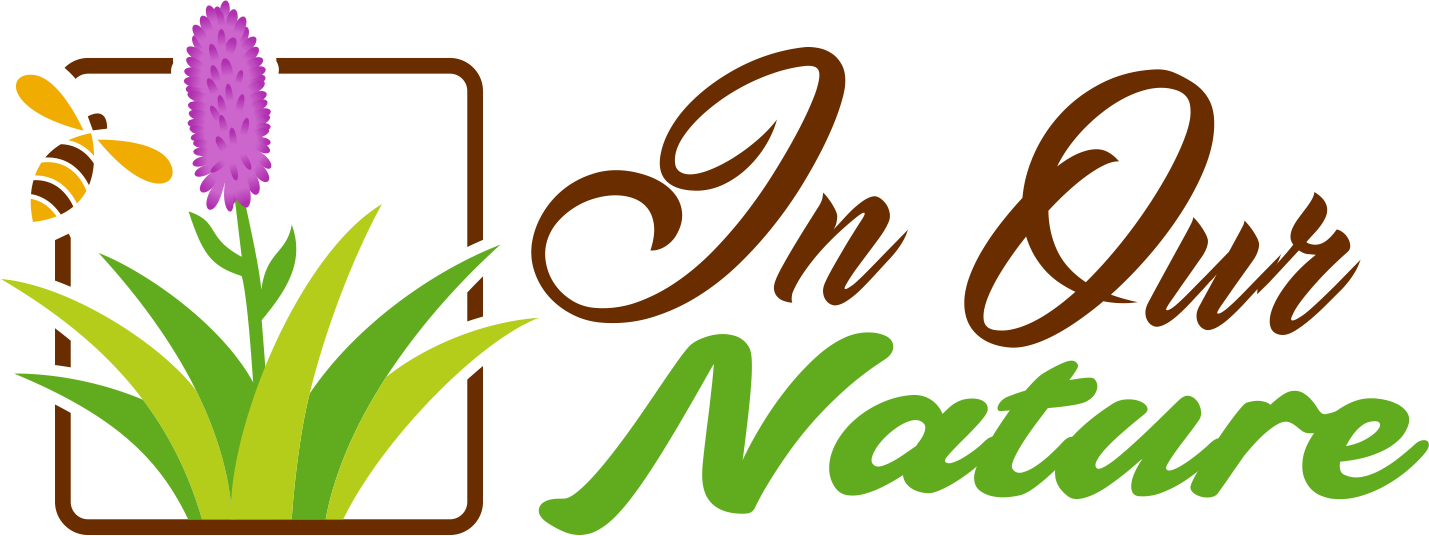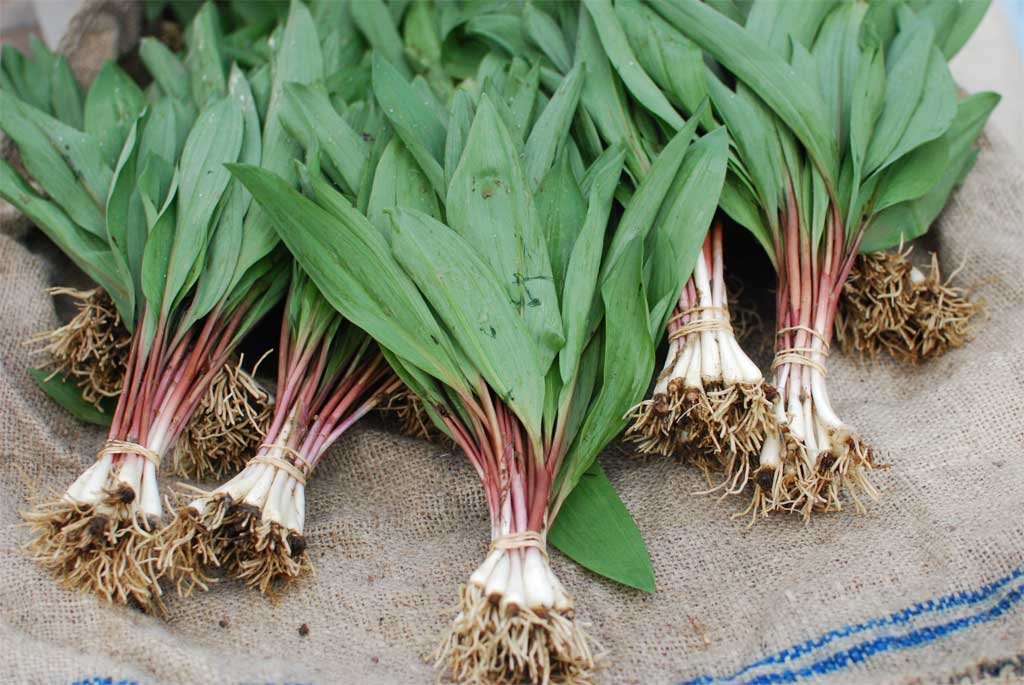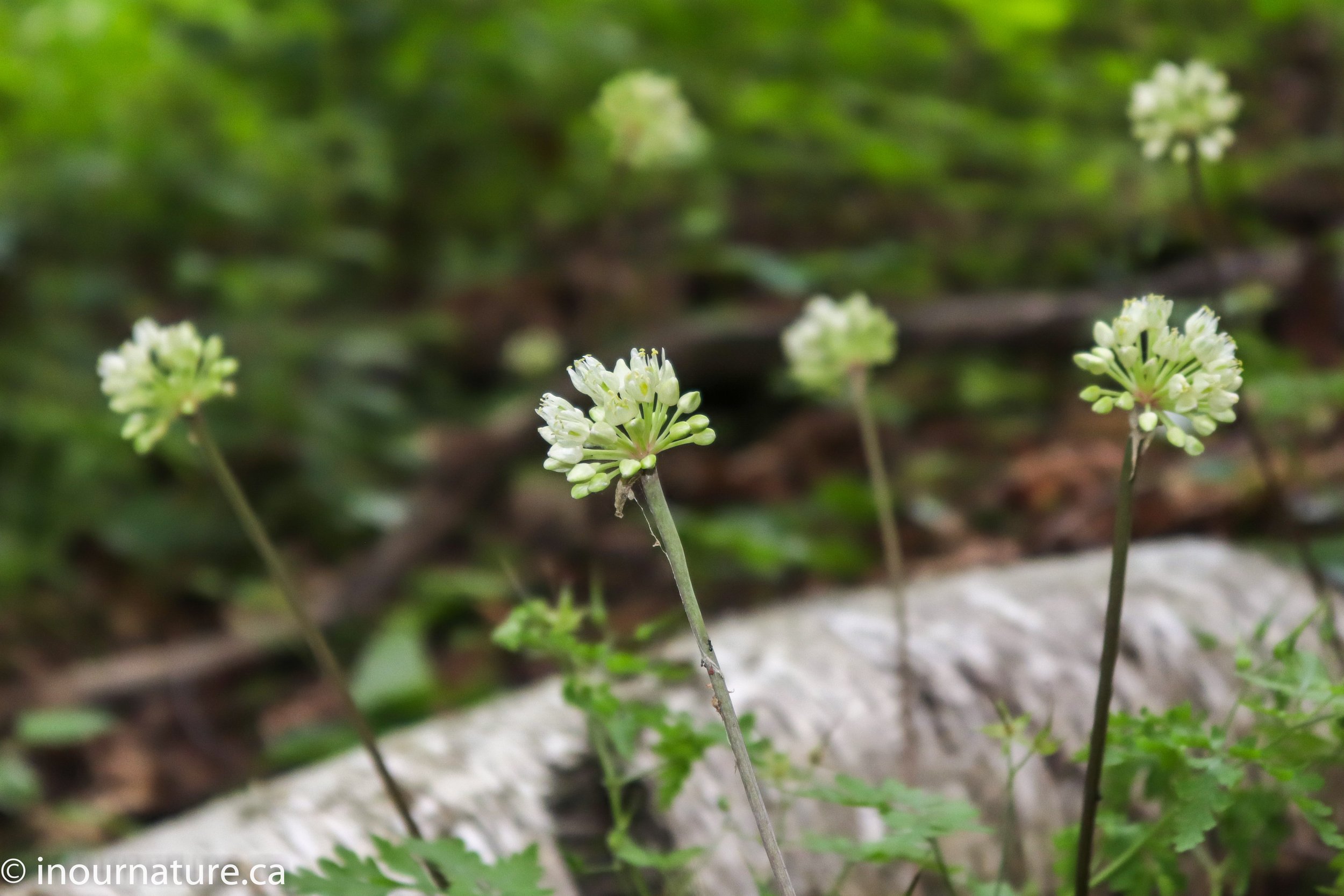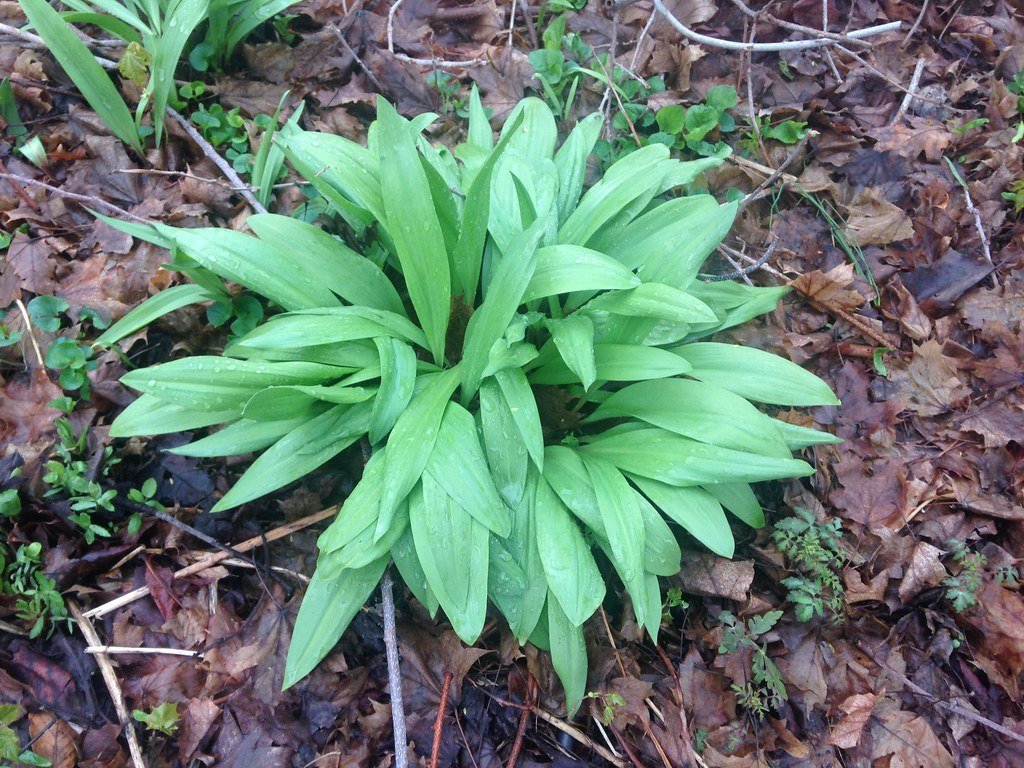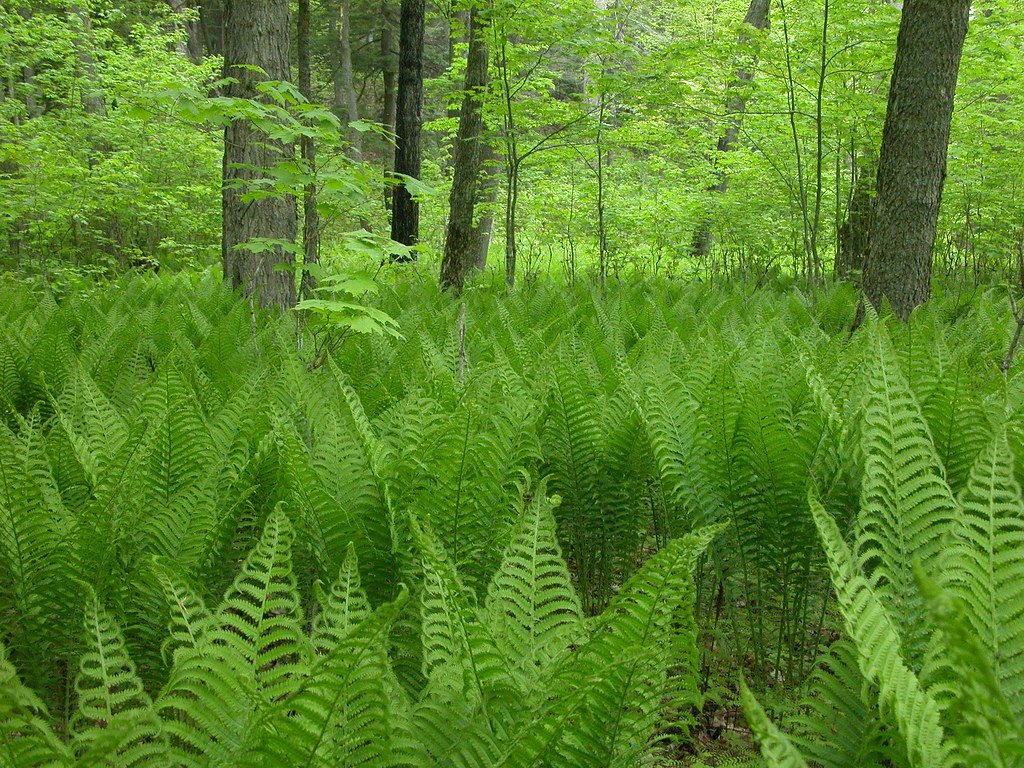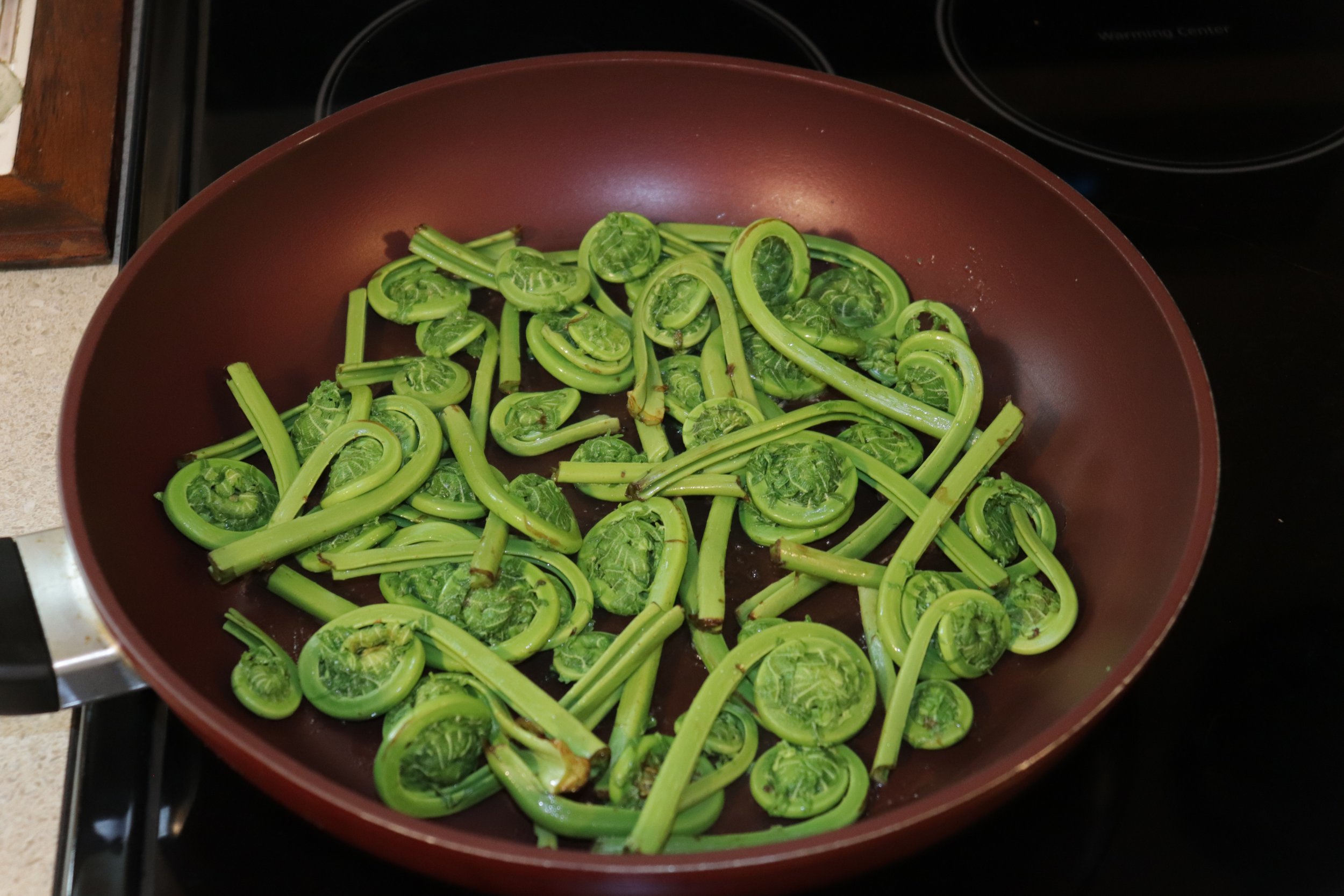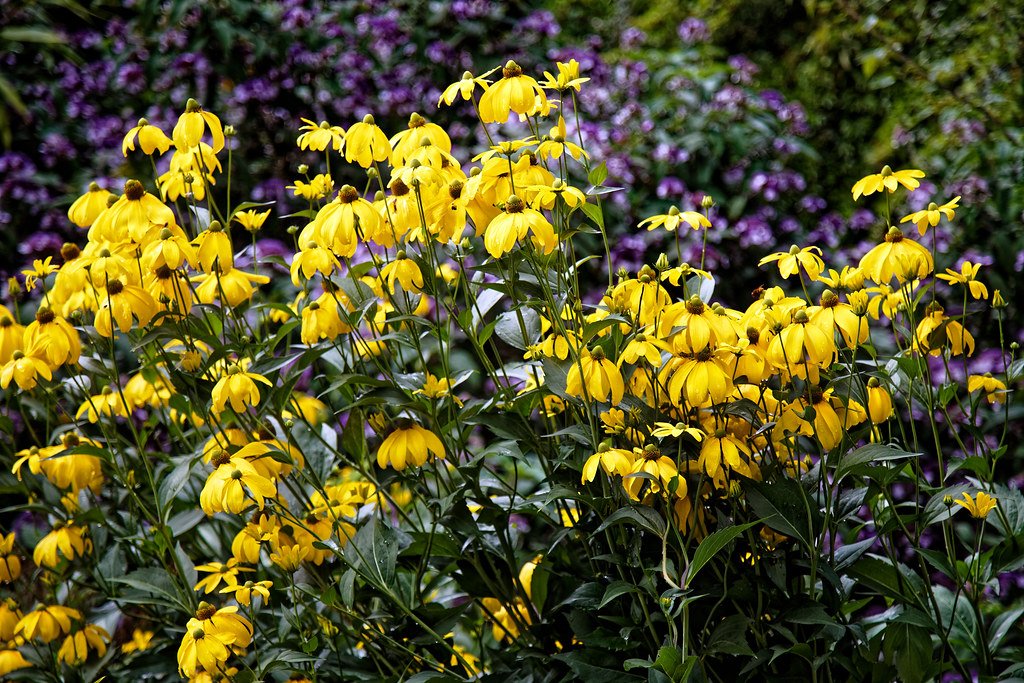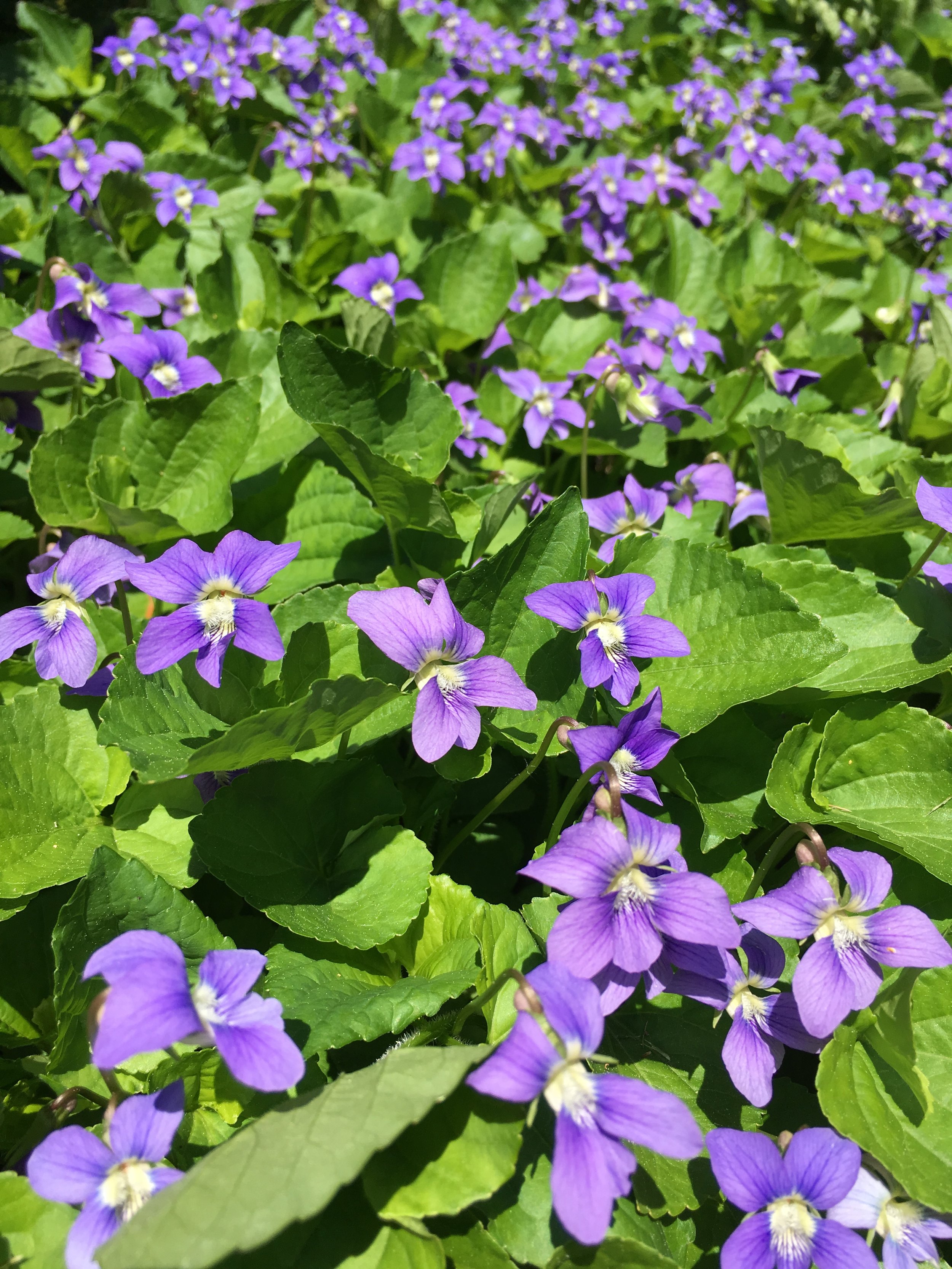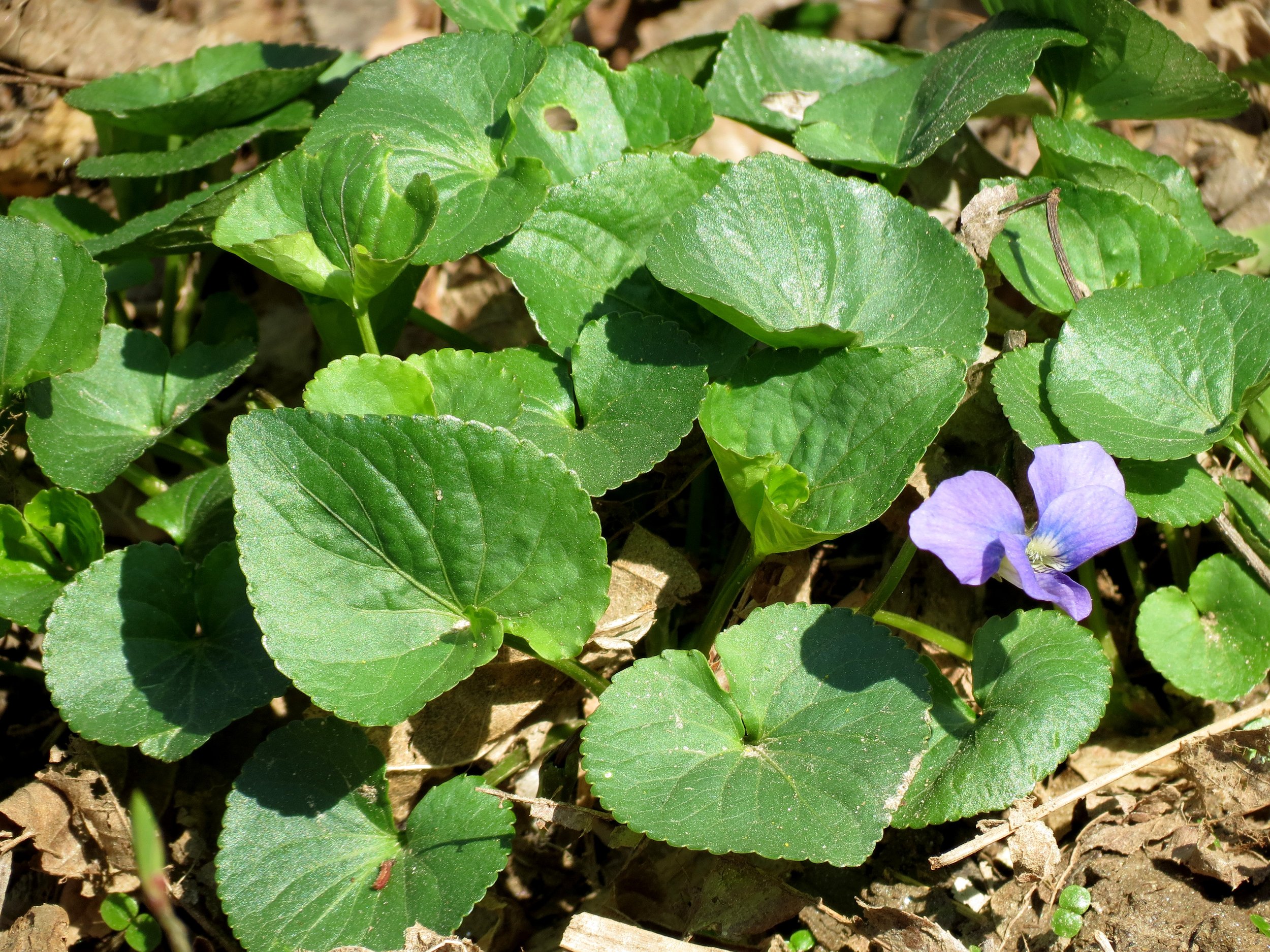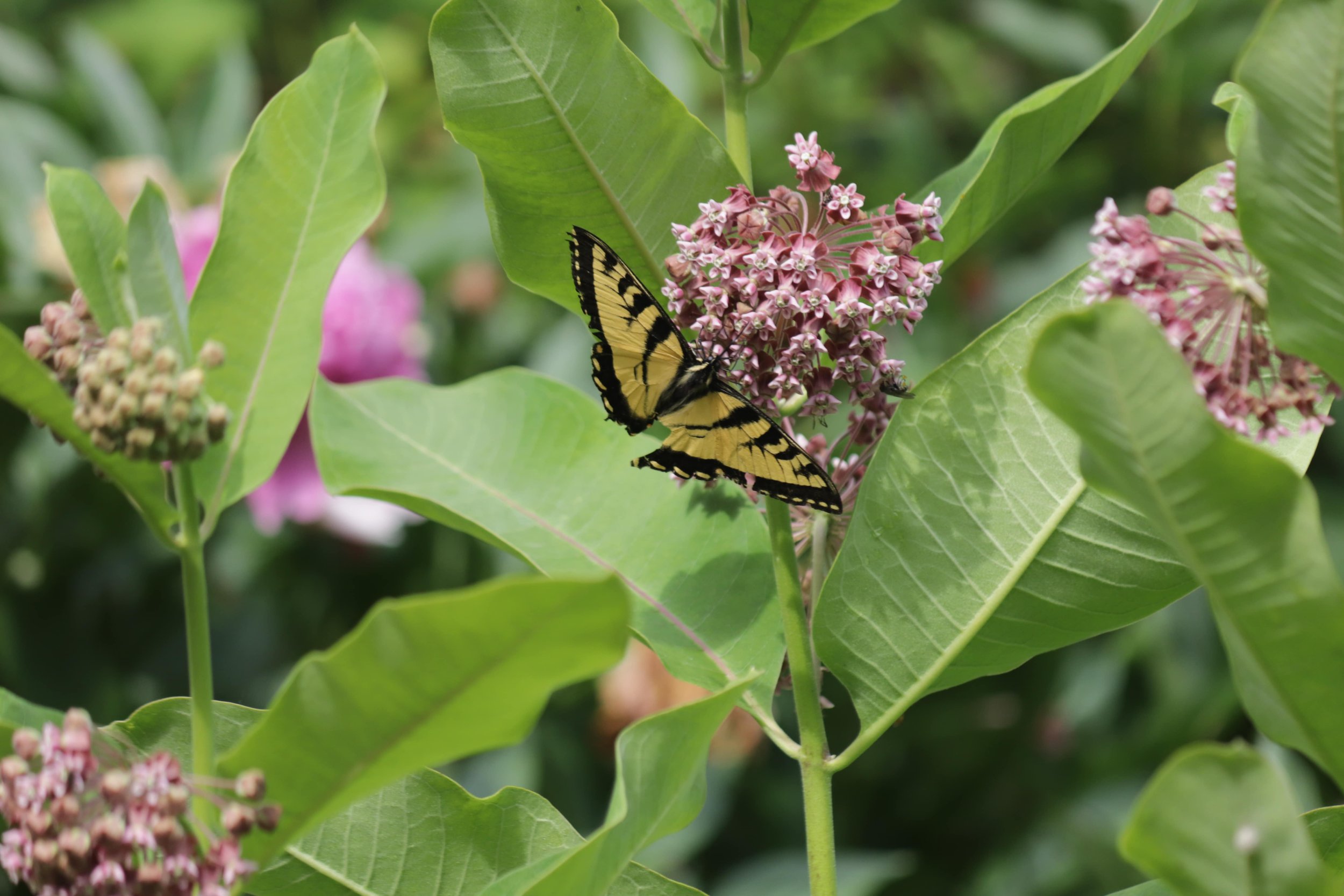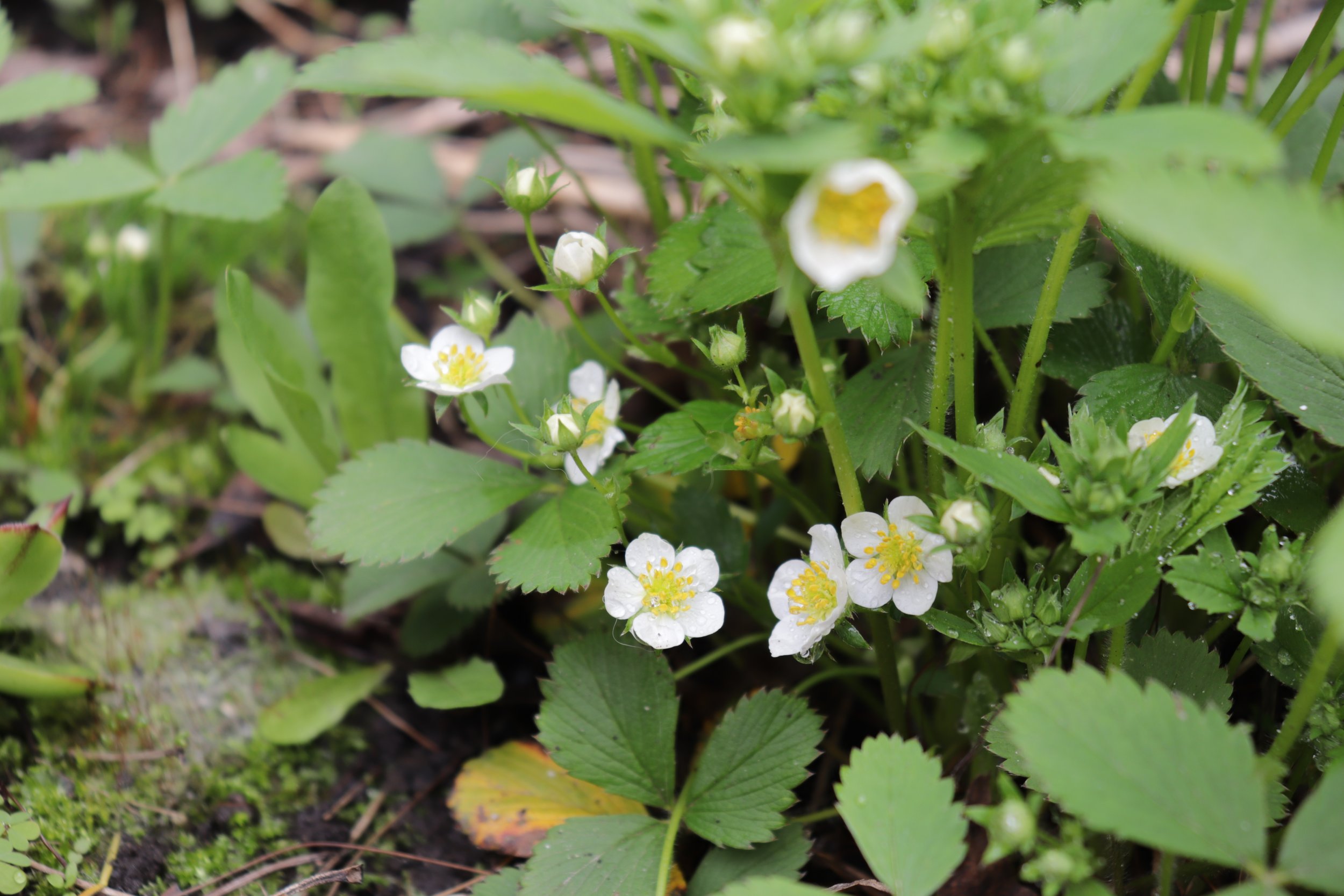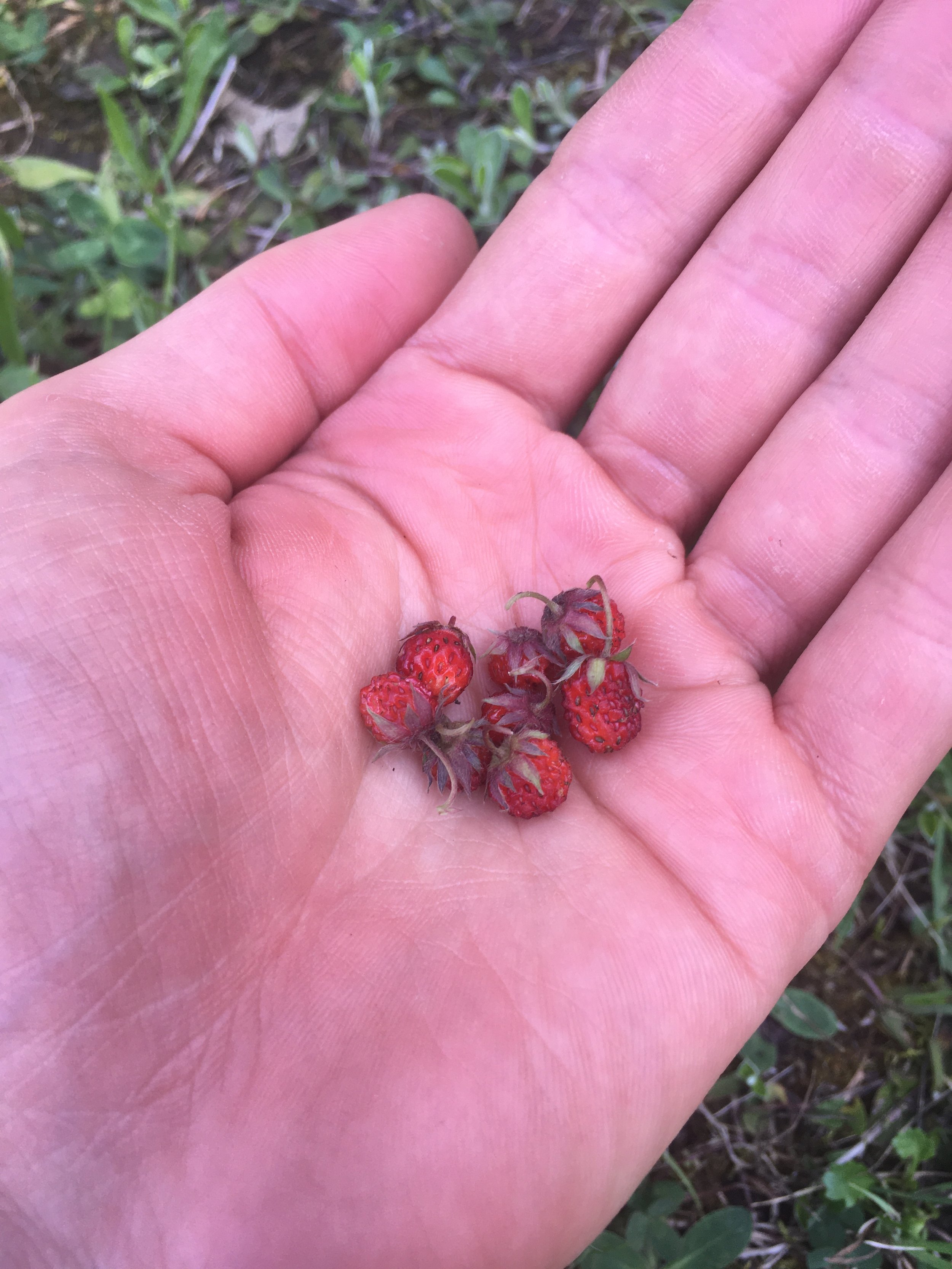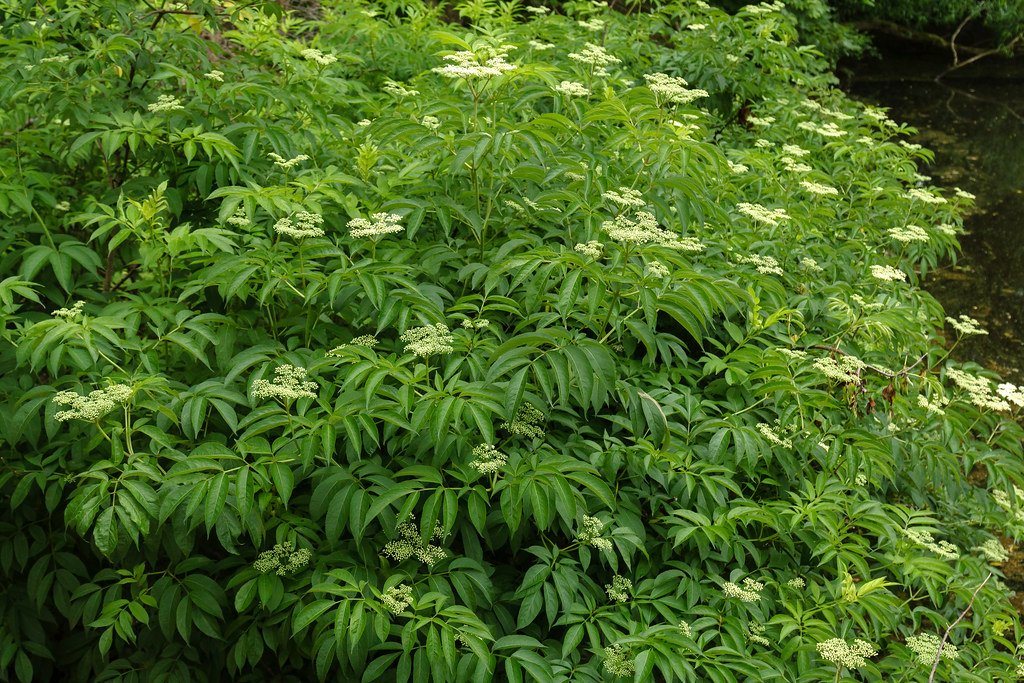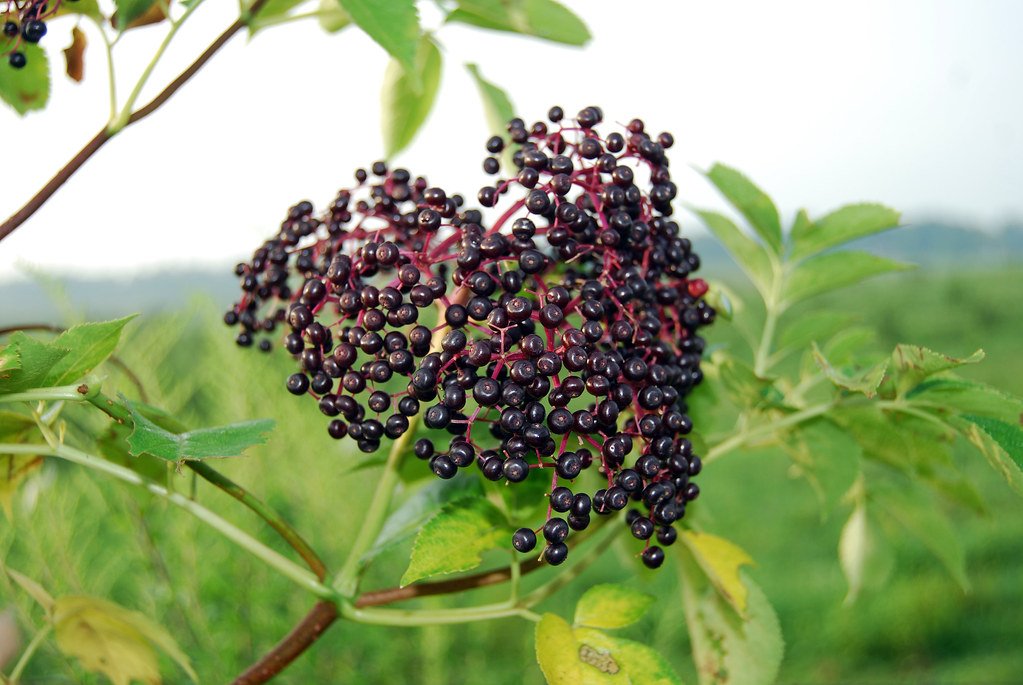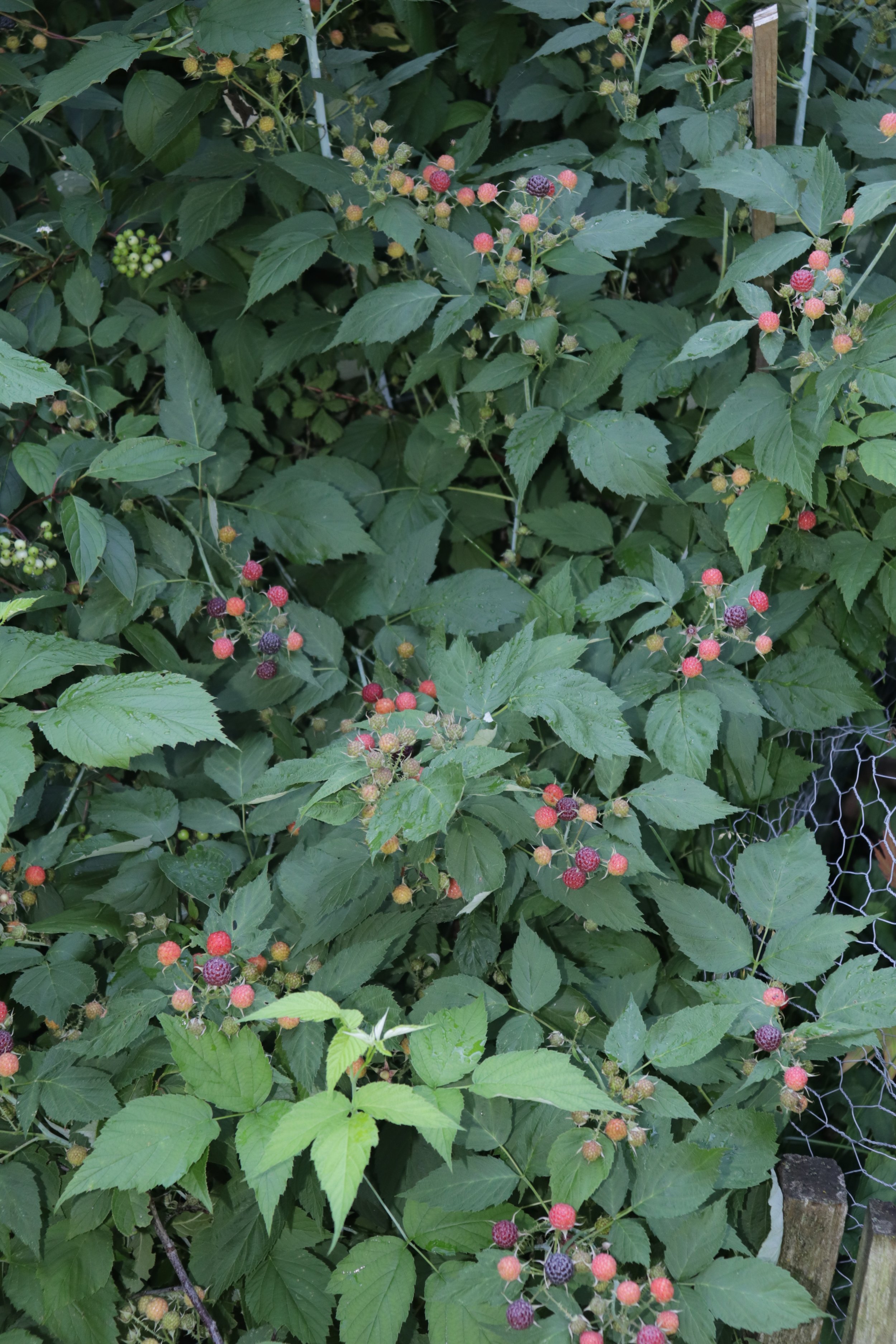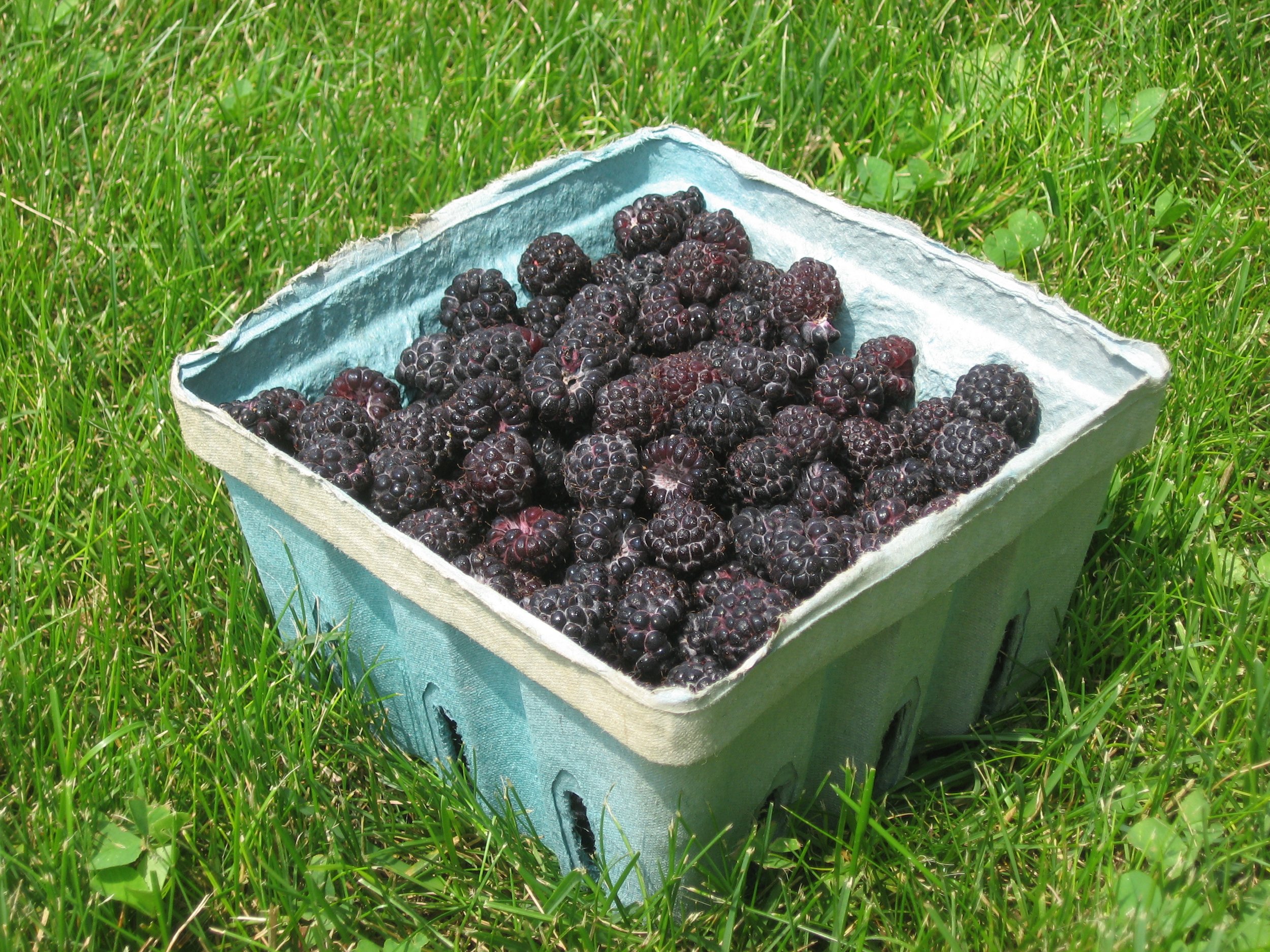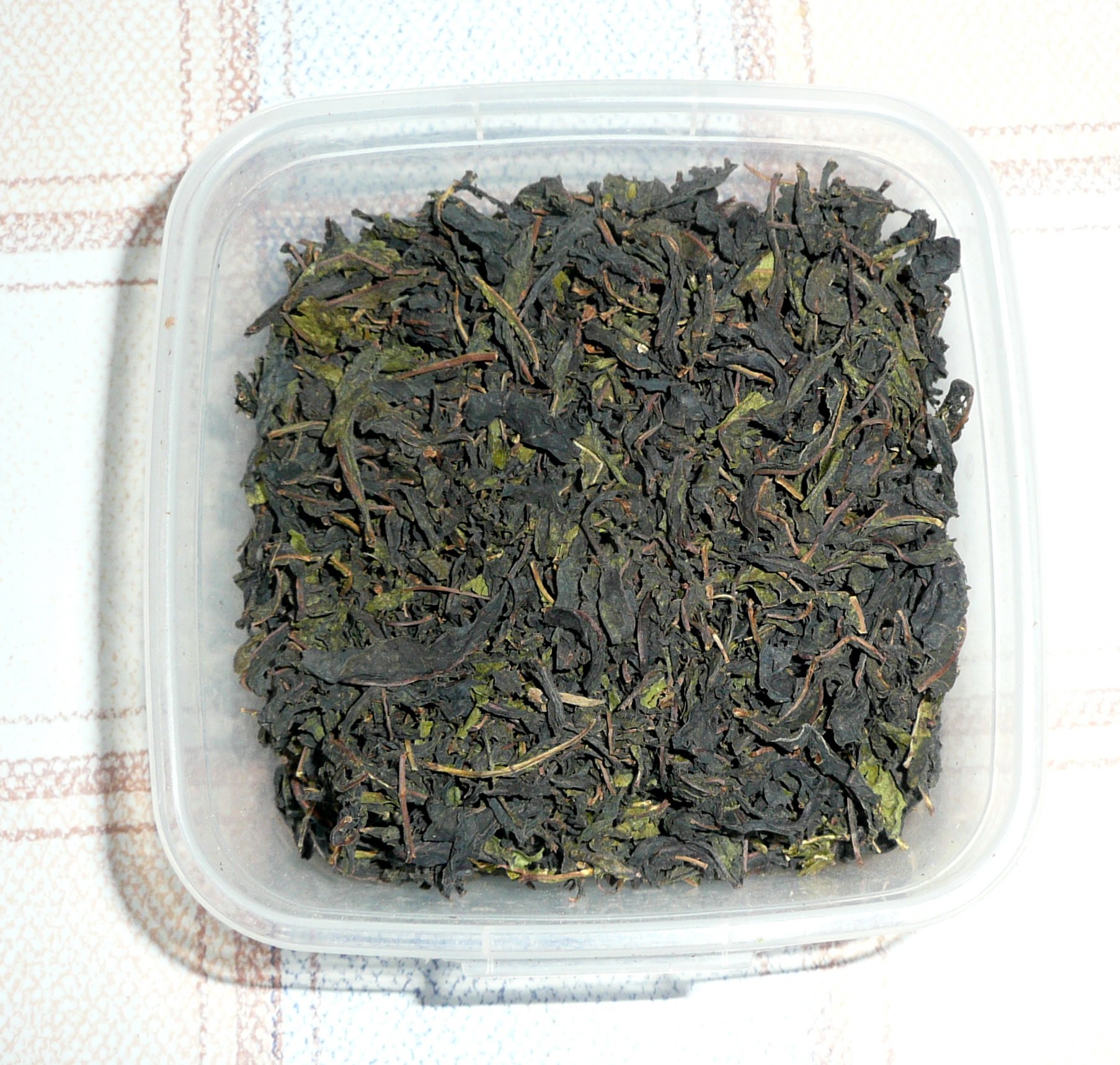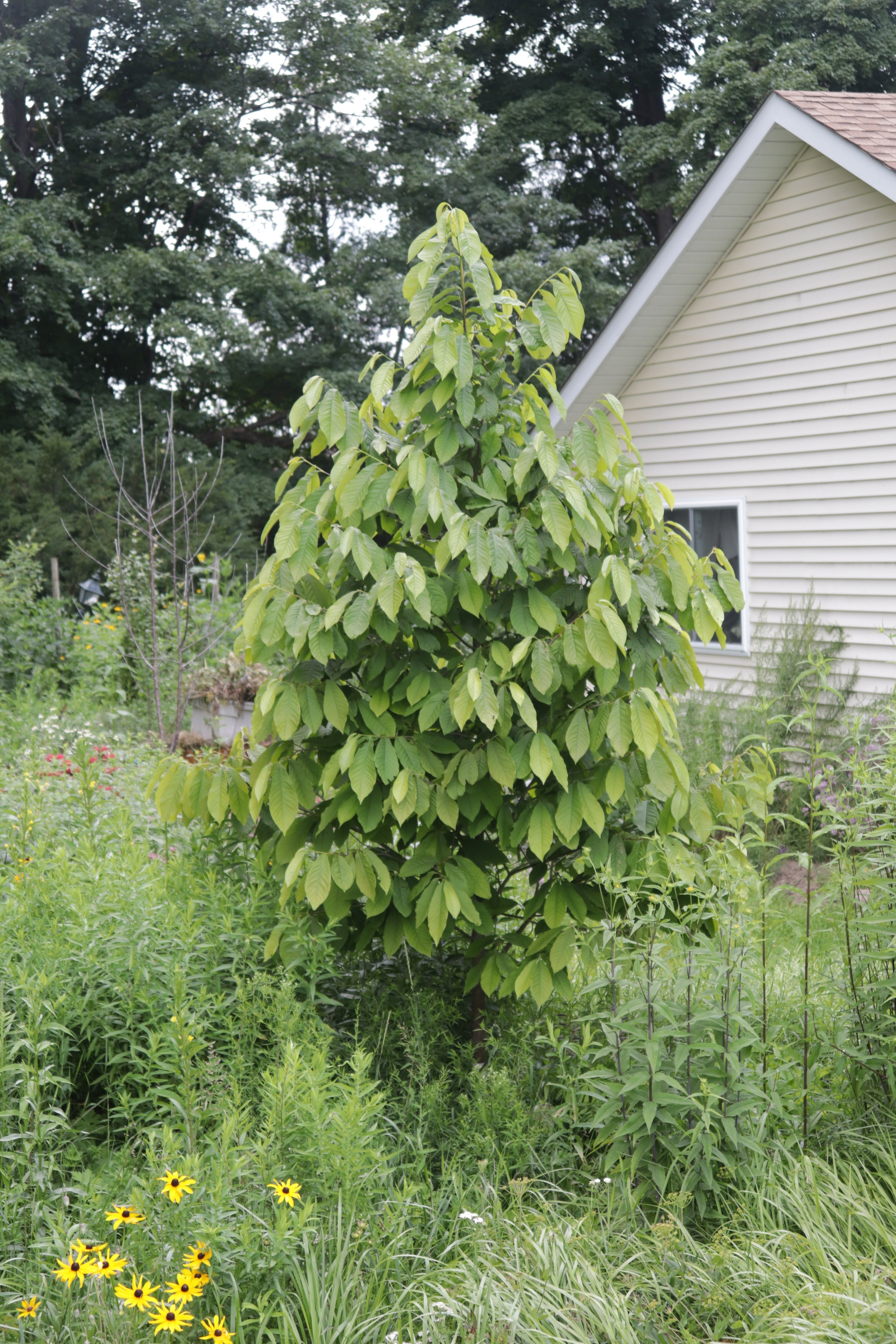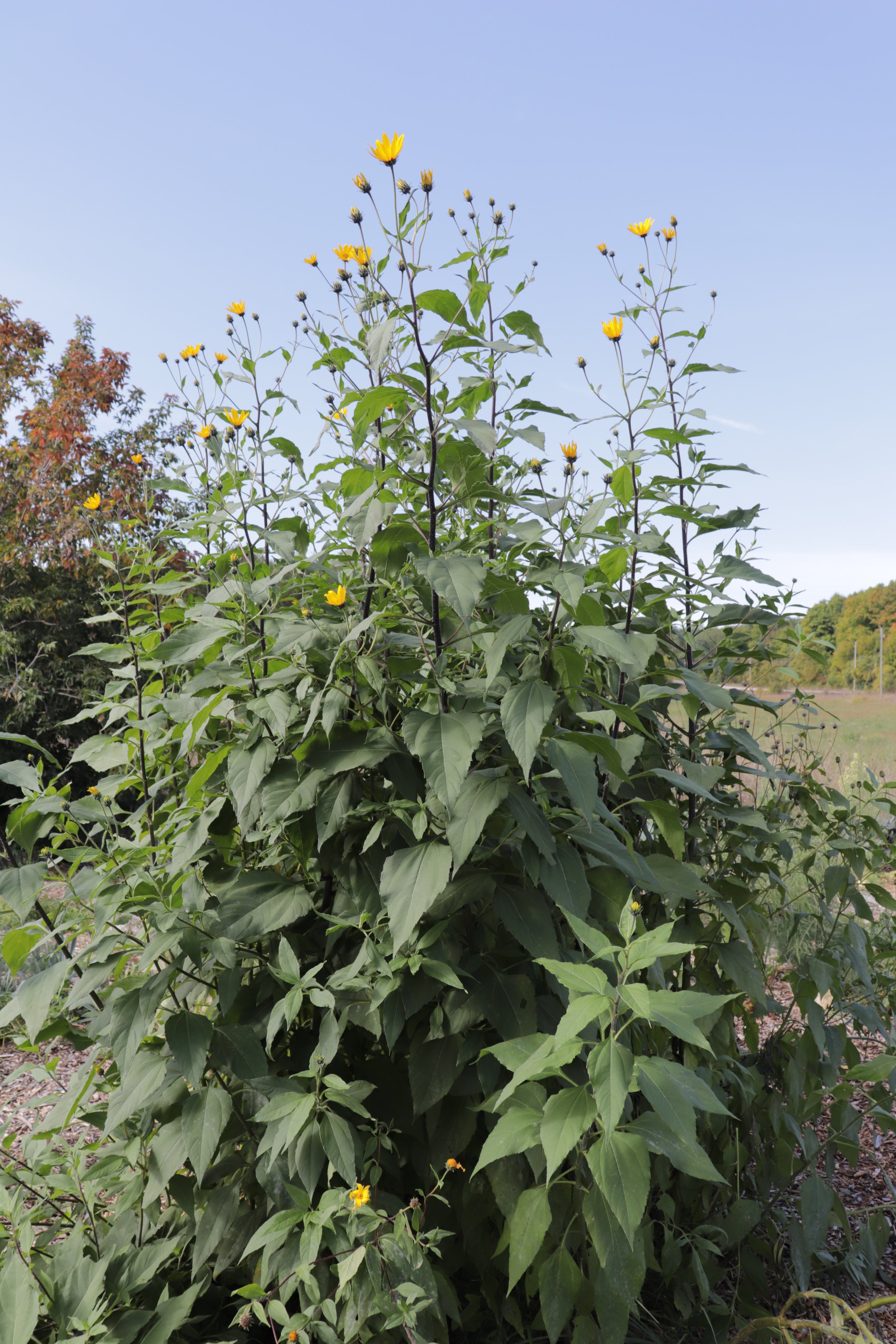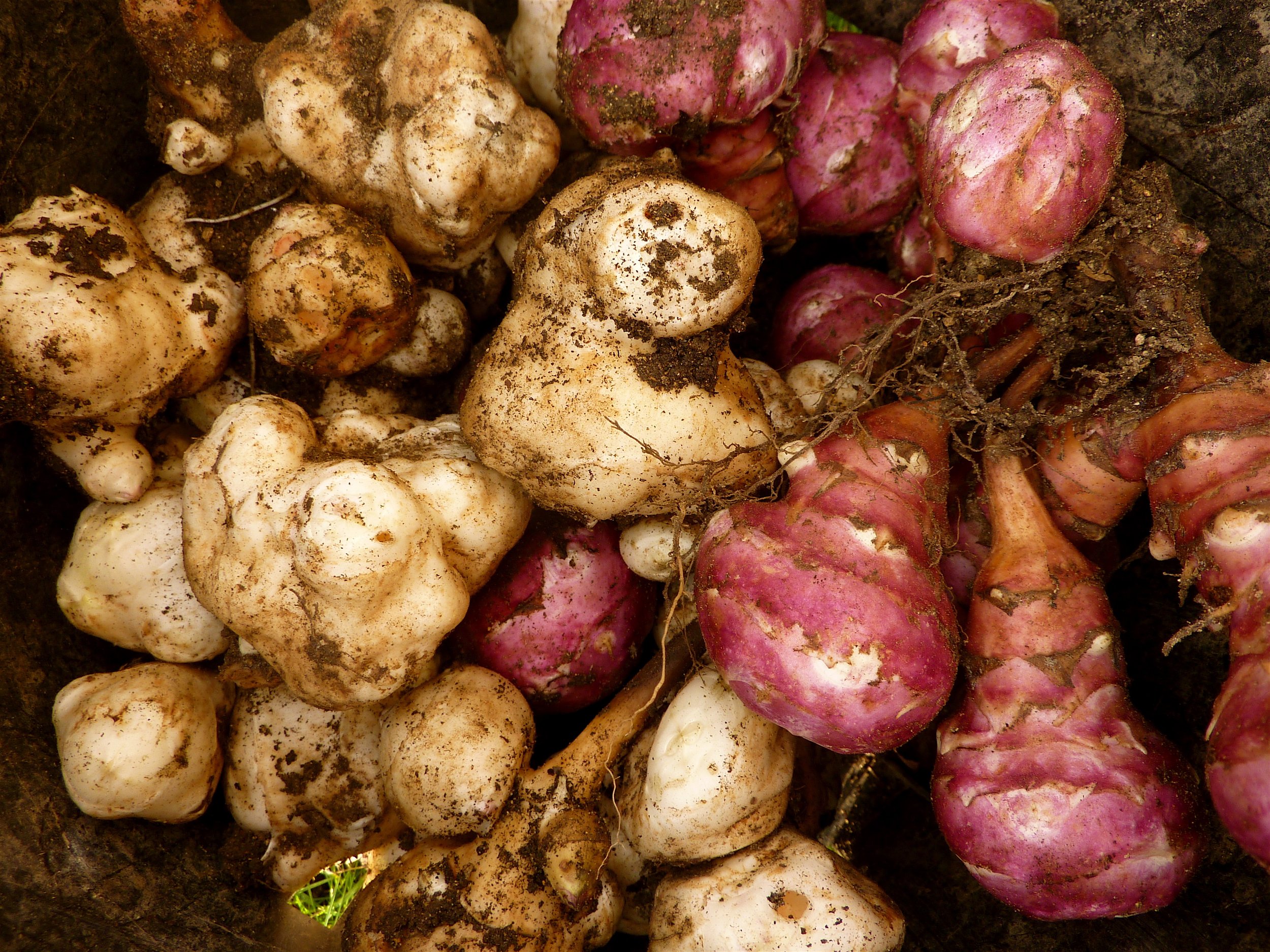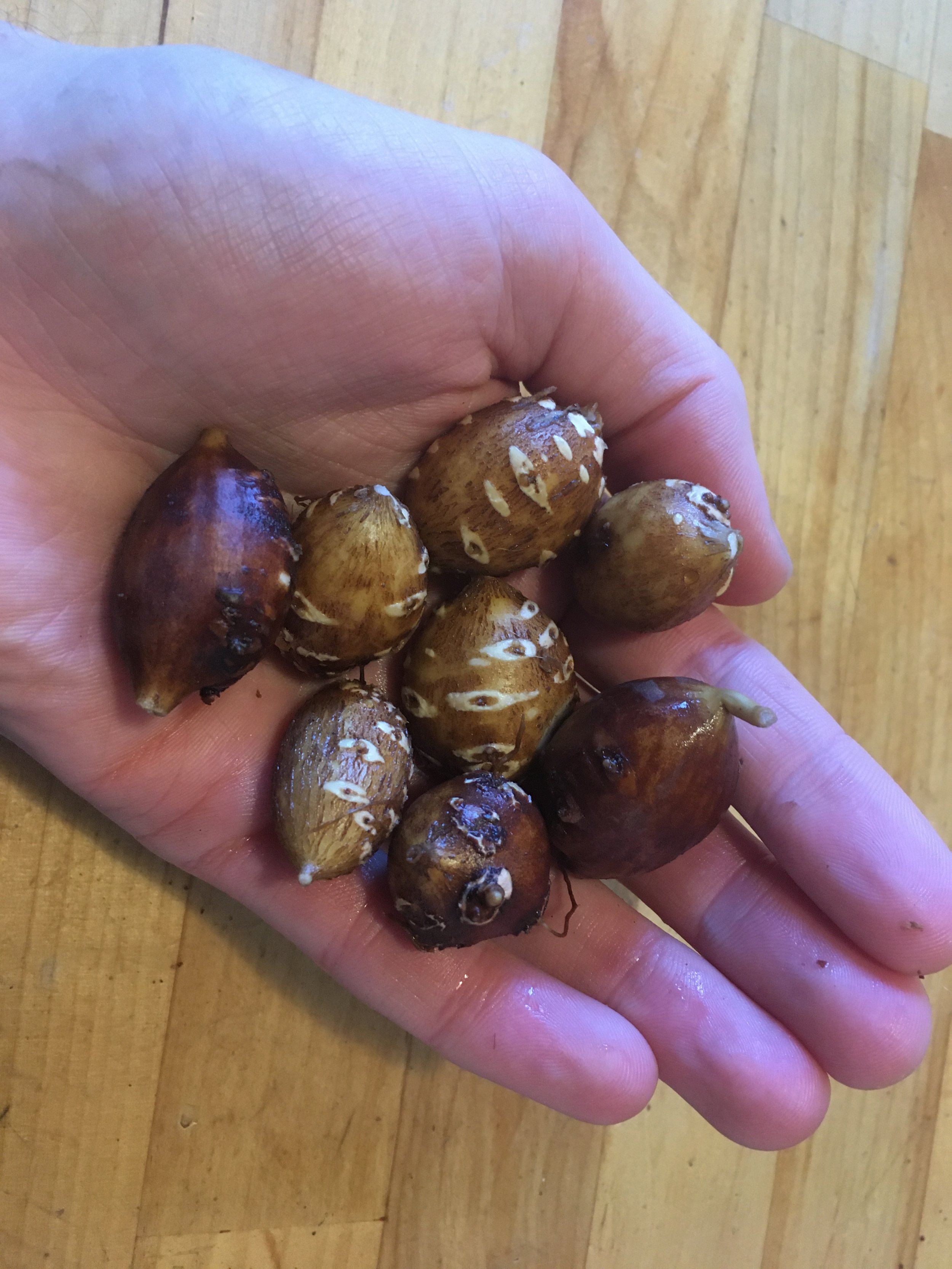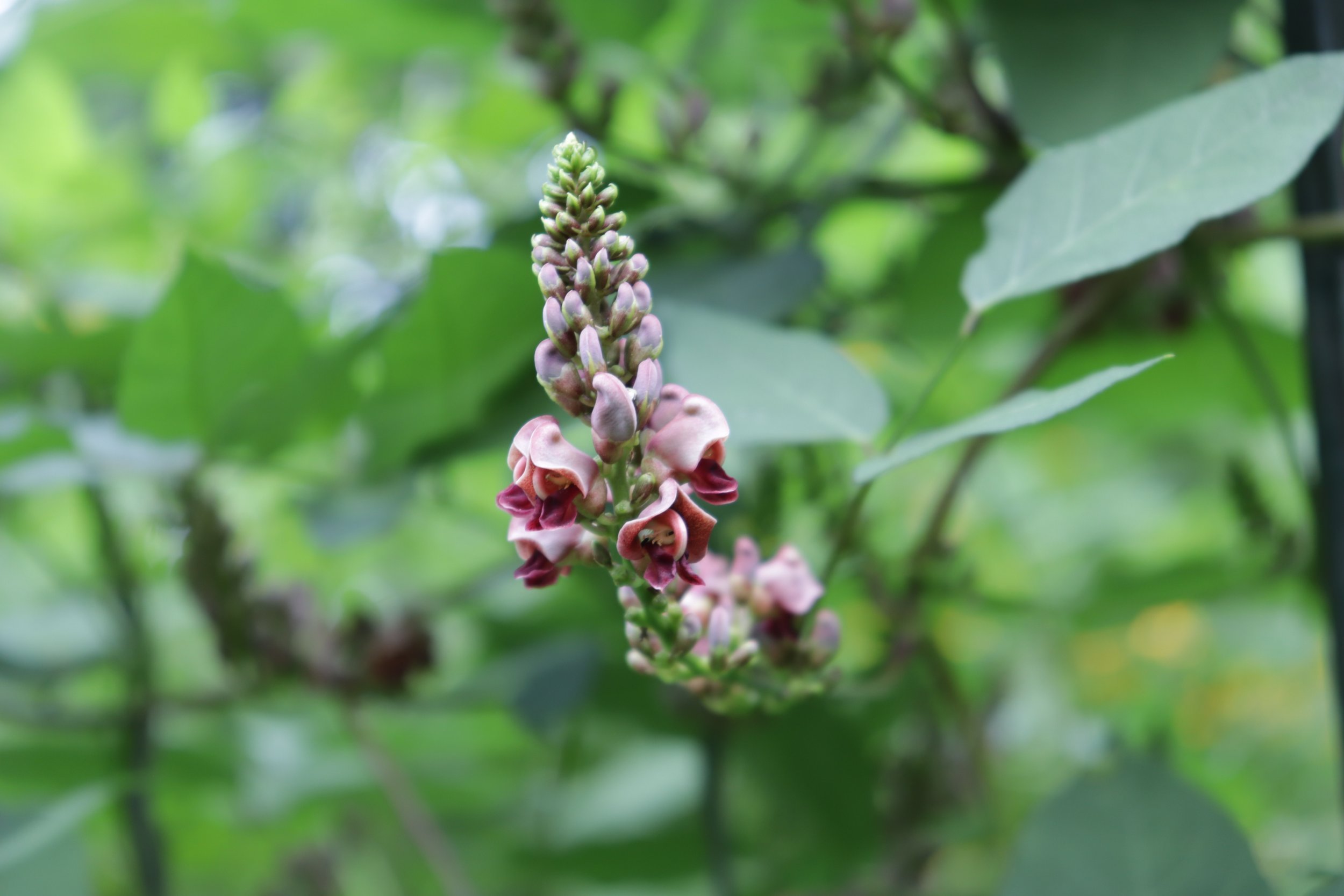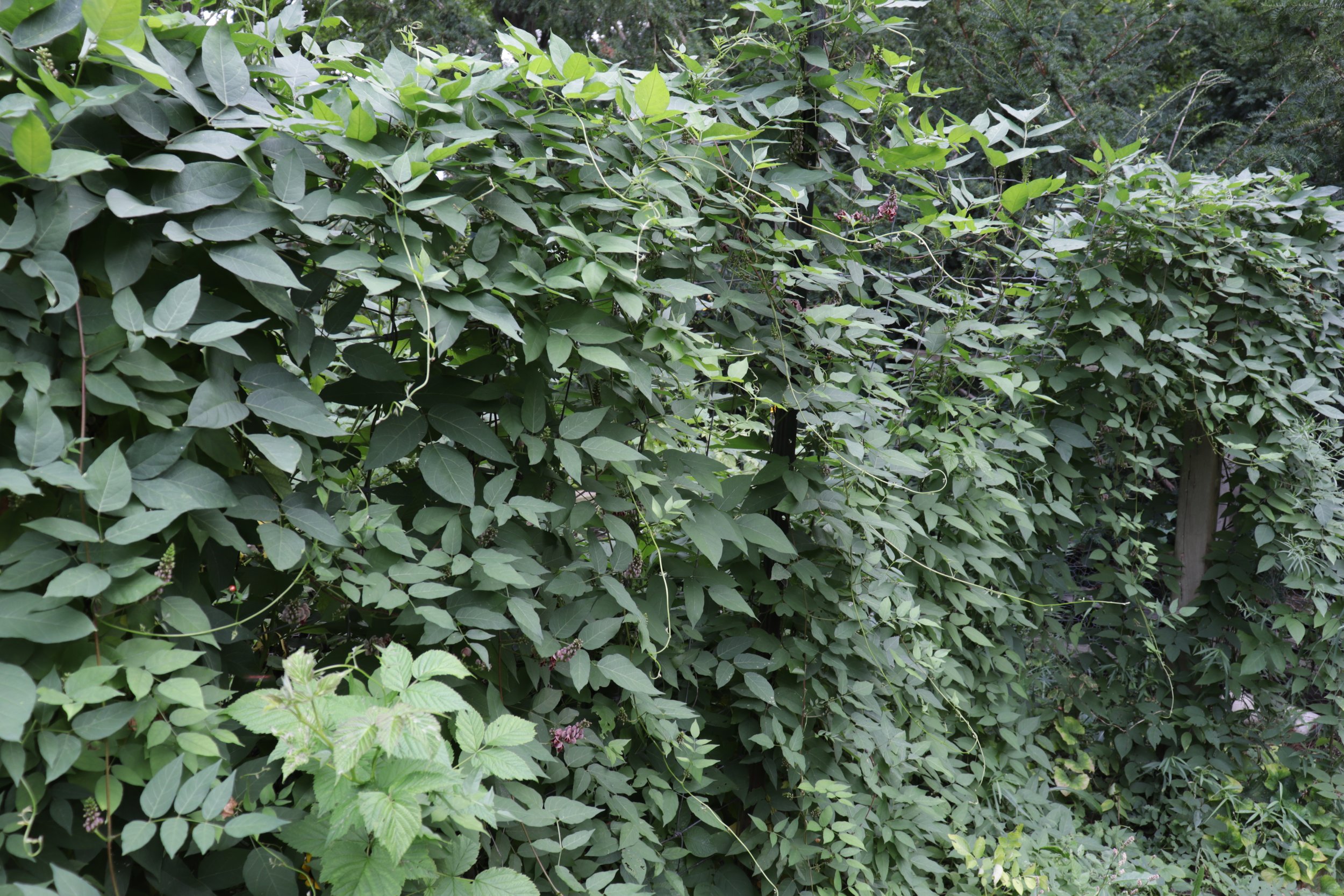12 Edible Native Plants For Your Garden
| Grow food, beauty and habitat |Southern Great Lakes Region|
NOTE: This is not an identification guide but rather an introduction to edible native plants - do your own, more detailed, research. I am assuming that you will be purchasing these plants from a reputable native plant nursery so you know what species you have from the beginning.
The idea of using North American native plants as food is not new by any means.
Discover the benefits of choosing plants that provide sustenance for humans and wildlife alike, such as Asclepias syriaca.
In fact, when we look back to the very first human settlers of North America, we can see that first nations cultures used native plant foods as sustenance for generations. Whether it was from farming hunting, gathering or fishing, the land provided great abundance but it certainly was not created by chance - or by natural forces. In fact, it would be misleading for me to say that North America was un-tamed wilderness prior to European arrival.
First nations cultures managed the landscapes around their settlements not only for agriculture but also to promote the growth of native fruit, nut and berry plants such as acorns, hickory nuts, hazelnuts, chestnuts, wild plum, grapes, groundnut, milkweed, paw paw and countless others (Source: The Once and Future Great Lakes Country by John L. Riley). These types of foods were promoted with native land care techniques such as pruning, transplanting, seed dispersal, and the controlled used of fire. By most definitions, it would be safe to say that parts of North America were edible native plant gardens of sorts. The abundance of fruits, nuts, seeds and berries not only benefited human inhabitants but also provided ideal habitat for wildlife to flourish such as deer, turkey, black bear, moose, squirrels, waterfowl and the now extinct passenger pigeon - all of which provided a staple food source for first nations.
In stark contrast, modern industrialized agriculture is highly destructive to nature and depends on removing a fully intact, thriving, native ecosystem and replacing it with a high maintenance monoculture. A study published in the journal of nature found that for 62% of threatened species studied world wide, agriculture is a more prevalent threat to their existence than climate change. In fact, climate change wasn’t even in the top 5!
Clearly our food systems have become too far removed from nature, but it doesn’t have to be this way.
Our food systems shouldn’t be separate from nature and nature shouldn’t be separate from our food systems. Mark Shepard, author of Restoration Agriculture: Real-world Permaculture for Farmers, has proven on a large, mechanized scale that perennial food systems based off native ecosystems can feed the world with genuinely nutritious food while turning a profit for farmers. The story of first nations management of the land is a further testament to the fact that it is possible to meet the needs of humans while providing enough abundance for nature to thrive too.
We have always been taught that we can either have food or nature but this simply not true.
The Benefits Of Edible Native Plant Gardens
Bringing the concept of edible native plants into our landscapes, whether it's a 100-acre farm or a 1/4-acre suburban garden, enhances our connection to nature and provides abundant, healthy food sources. By cultivating edible native landscapes, we not only bolster our own food security but also boost biodiversity in our surroundings. Many wild foraged plants face over-harvesting in their natural habitats, so growing them in your yard ensures a sustainable food supply while alleviating pressure on wild plant populations. Additionally, most native plant foods are perennials, eliminating the need for yearly replanting like with potatoes.
In the following article, you will discover In Our Nature’s top 12 edible native plants to grow in your yard for beauty, wildlife value and food.
12 Edible Native Plants For Your Garden
Listed roughly by harvest time, starting with spring. Click to jump to a plant
Wild Leek/Ramps (Allium tricoccum)
One of the most prized wild edibles in our forests and not just because they are synonymous with the first warm days of spring but they are edible and delicious too! They have become popular to the point of overharvesting and are even classified as endangered in some U.S. states. Fortunately, they are easy to grow in your garden. All you need is some patience and the right growing conditions.
How to grow
Exposure: Deciduous shade (the dappled shade found under deciduous trees)
Height: 3 ft, 90 cm
Blooms: Globular clusters of white flowers. Summer.
Soil: Sand, loam, clay. Thrives in rich soils. Benefits from a layer of fallen leaves in the fall.
Moisture: Well-draining but consistently moist
Habitat: Rich deciduous woods, especially near Sugar Maples.
Notes:
Wild leeks are spring ephemerals meaning they do most of their growing in early spring before the trees above them have leafed out, then they go dormant by summertime. Due to its ephemeral nature, you will need to pair them with plants that can take over the spotlight once they fade such as oak sedge.
You can grow them from seed harvested in early fall but they will take 1-2 seasons in the ground before they germinate then another several years before they flower! Reach out to local native plant nurseries to see if any have potted plants available in the spring. Please don’t transplant from the wild.
How to harvest & eat
Harvest in early spring and stop when leaves start to yellow
The whole plant is edible, from the emerald green leaves to the white bulb underground. All parts have a rich onion-like flavour with a hint of sweetness.
When harvesting the leaves, use sharp pruning shears to snip off just one leaf from each plant. This will allow them to continue growing for the season with the remaining leaf.
When harvesting the bulb the best tool you can use is a high quality hori hori knife. This will allow you to dig up individual plants quickly and easily while disturbing surrounding vegetation as little as possible. When the plant it dug up, make sure to separate the rootstock from the bulb then re-plant the rootstock in the ground so it can grow back next year.
Ramp leaves can be used in pesto, soups or anywhere else you would use green onions or garlic. You can even dehydrate them! As for the bulbs, they can be grilled, used in soups, made into sauces or even pickled - the opportunities are endless!
Habitat value
The flowers of Wild leeks appear in early to mid summer once the leaves have withered away for the year. They provide a valuable food source in the shade of the forest when not much else is in bloom.
These flowers are visited by sweat bees, mining bees and even bumblebee queens. The onion flavour means they are not very popular with deer and rabbit.
Ostrich Fern (Matteuccia struthiopteris)
Almost as iconic as Wild Leeks in the world of foraging, Ostrich fern is not often known as an edible until you use its more familiar name - the fiddlehead! Yes, this is one of the few edible ferns you will come across and it is delightfully easy to grow in your own backyard. In fact, the Ostrich Fern has already solidified its place in home gardens but typically for its use as a beautiful and reliable groundcover, not food.
How to grow
Exposure: Shade, part shade
Height: 4-5 ft, 120-150 cm
Blooms: Does not flower
Soil: Sand, loam, clay. Thrives in rich soils.
Moisture: Thrives in moist soils. Tolerates average moisture but may go brown during droughts
Habitat: Rich deciduous woods, floodplains, streamsides
Notes:
Spreads prolifically by rhizomes in rich, moist soils to form colonies
Fiddleheads are very easy to grow despite selling for up to $20/lb
Can be grown from spores but requires patience. Best grown from transplants (available at many native plant nurseries)
How to harvest & eat
Harvest in early spring until fronds start to unfurl
The harvest season is very short. You have, at most, a 2-3 week period to harvest quality fiddleheads
Look for the heads that are 2-6 inches high but still have tightly curled heads (pictured)
Harvest with a sharp knife and only take 1-2 heads per fern and only choose ferns with more than 4 heads. Harvesting more will limit the plants ability to photosynthesize as it will not produce more heads that year once picked.
Use like asparagus. Steam, fry or pickle. Excellent with garlic and butter. Blanching prior to cooking is recommended.
Habitat value
Provides excellent cover for small mammals and ground birds.
Not particularly important as a food source to wildlife to the best of my knowledge.
Cut-leaf Coneflower (Rudbeckia laciniata)
Cutleaf-coneflower has made a name for itself in gardens for its bold yellow blooms and ease of growth. However, few gardeners realize that they are actually growing one of the best leafy greens around! In fact, I look forward to cooking up this leafy green in the spring time more so than any spinach or kale I grow in my vegetable garden due to its rich, unique taste.
How to grow
Exposure: Full sun to part shade
Height: up to 8ft, 240cm
Blooms: Yellow, mid summer into fall
Soil: sand, loam, clay. Thrives in organically rich soils.
Moisture: Wet to average
Habitat: Floodplains, wetlands, lowland woods, streambanks
Notes:
Easily grown from seed or division but transplants are faster to establish
Plants tend to flop unless they are grown in a densely planted garden
How to harvest & eat
Harvest in spring until plant starts to send up flower stalks at which point leaves become tough (but still edible). Can be harvested again in the fall after plant has flowered but spring leaves are the most tender.
Cut basal leaves at the base with a sharp knife. Cook soon after cutting.
Leaves must be blanched for a few minutes at which point they can be used like spinach. Substitute for spinach in anything from omelets, stir-frys, soups or just in a cream sauce. Blanched leaves can be frozen.
Has a rich, deep flavour that is unique to this plant.
Habitat value
Late season blooms provide abundance for butterflies, bees and other pollinators
Seed heads feed birds with oil rich seeds
Common Violet (Viola sororia)
This widespread wildflower is often considered a weed by most gardeners who go to great lengths to eradicate it from theirs yards. However, maybe the plant isn’t the problem but rather our mindset is! Wild Violet has a lot of value to add to our landscape and it has multiple edible uses. Once we start to understand the value this plant brings to our yards we can start to see it a little bit differently and welcome its presence in our lives as a low maintenance perennial food source.
How to grow
Exposure: full sun to part shade
Height: <1ft, <30cm
Blooms: Violet, light pink, spring to early summer
Soil: Adaptable to most soils
Moisture: Average to dry
Habitat: Moist hardwood forests, lawns, meadows
Notes:
Used as a fast spreading, adaptable groundcover
Spreads only by seed. Plants can self-fertilize
Grows well in a lawn. Learn more about native groundcovers here.
How to harvest & eat
Flowers: Pick open flowers in the spring by hand. Leave the stalk behind.
Leaves: Best picking is in spring to early summer before the leaves get tough. Sometimes plants produce a second flush of leaves in the summer or fall where they can be picked again. Leaves are easily picked by hand but leave the stalk behind.
Use the flowers fresh or candied as edible garnishes. They also make a wonderful jelly with a rich violet colour and outstanding taste.
Use the leaves as a substitute for leafy greens. They don’t have striking flavour profile (they are somewhat bland) but they add a lot of nutrition when mixed with other greens. I have even used them in saurkraut which helps preserve their vitamin C content.
Habitat value
Nectar in the flowers supports butterflies, and bees (especially bumblebees).
The leaves feed caterpillars of Fritillary butterflies
Common Milkweed (Asclepias syriaca)
Common milkweeds unfortunate name helps perpetuate the idea that it is a common weed that should be delegated to roadsides and old fields. This couldn’t be further from the truth because this plant is extremely valuable to gardeners, wildlife and foodies alike! It may come as a surprise to see this plant on a list of edible species because its milky sap is known to be mildy toxic. However, when prepared properly, milkweed becomes not only edible, but incredibly delicious and nutritious with something edible being produced during every stage of its growth cycle.
How to grow
Exposure: Full sun to light shade. Grows in full shade but may not flower.
Height: 1.2m, 4ft. Sometimes up to 1.5m, 5ft.
Blooms: White to pink. Highly fragrant. Summer.
Soil: Sand, loam, clay. Adaptable. 5.6 - 7.5 pH.
Moisture: Average (mesic), dry. Adaptable but doesn’t like wet feet.
Habitat: Meadows, Prairies, open woods, roadsides, old fields, disturbed areas
Notes:
Its spread might be too prolific for formal gardens but it works well in less formal gardens and wild areas where it adds bold foliage and clusters of showy, fragrant flowers.
Easy to grow from seed if sown in fall. Takes a few years to mature from seed.
Works well with other prolific spreaders like Wild bergamot (Monarda fistulosa), Fireweed (Epilobium angustifolium).
How to harvest & eat milkweed
Harvest all parts with a sharp knife or by pinching them off with your fingernail. Avoid getting the sticky sap on your finger or your eye. Wear gloves. The flowers get especially sticky to harvest due to high nectar content.
Raw milkweed (shoots, flower buds, seed pods) contains cardiac glycosides that need to be denatured by cooking. They are readily denatured by blanching in boiling, salted water for 1-3 minutes before cooking them into a meal.
Milkweed is a very pleasant vegetable to eat. It has a pleasant ‘green’ flavour with much more depth than you get from cultivated vegetables like broccoli. Use in place of most other common vegetables.
Young shoots can be used like asparagus. The unopened flower buds can be used like broccoli or rapini (both of which are also unopened flower buds). The flowers can be eaten raw and can be made into a syrup, cordial or used as a garnish. The syrup or cordial can be canned for later use.
The young pods can be cooked like okra but lack the slimy texture - use them in a stiry fry or casserole. They can also be battered, pickled or lacto-fermented. The immature silk inside the pods has a creamy, buttery texture.
For all milkweed parts, except the flowers, they can be frozen directly after blanching.
Habitat value
Milkweed has enormous wildlife value. The leaves feed many insect species including those of the monarch butterfly (Danaus plexippus) and milkweed tussock moth (Euchaetes egle). Native bees and butterflies are attracted to the nectar rich flowers en masse! While in bloom, it likely to be the most popular plant with pollinators in your whole yard. Birds forage for insects hiding in the seed pods and use the milkweed silk and stem fibers for nesting material.
Wild Strawberry (Fragaria virginiana)
Wild strawberry is the adaptable, tough, fast-spreading, attractive ground cover you have been looking for! Its fruit is small but packs a punch of flavor and sweetness that rivals commercially grown strawberries
How to grow
Exposure: Full sun to light shade.
Height: <30cm, 1ft. Shorter in drier/less fertile soils.
Blooms: White, spring.
Soil: Sand, loamy, clay. Adaptable but prefers organically rich soil. 5.3-7 pH.
Moisture: Dry to average. Must be well-draining.
Habitat: Dry fields, meadows, lawns, prairies, roadsides.
Notes:
Grow it between taller perennials as a ‘green mulch’ or even to increase biodiversity in your lawn.
If grown on its own it will form a dense, weed-suppressing ground cover with bountiful spring blooms.
It will tolerate urban pollution, salt and light foot traffic.
How to harvest & eat
Look under the leaves for the bright red berries. Picking can be tedious but healthy plants will produce in abundance. Due to the small size, many gardeners prefer growing cultivated strawberry plants for food however, they pale in comparison to the flavour and sweetness of wild strawberries.
In my opinion, they are best used as a fresh snack as it can be time consuming to pick significant quantities for preservation unless you have a large patch. Nonetheless, they can be used the same way you would use cultivated strawberries. I won’t go into too much detail because, chance are, you already know how to use strawberries!
Habitat value
Wild strawberry has significant wildlife value. While in bloom, the flowers are very attractive to small bees such as metalic green sweat bees, mason bees and carpenter bees. They also support a variety of flies, skippers and hover flies. The berries are readily consumed by a diversity of wildlife from deer, skunks, chipmunks to ground-foraging birds like the brown thrasher or American robin. The leaves are a larval host for a variety of butterflies and moths including the Grizzled Skipper (Pyrgus centaureae).
Canada Elder (Sambucus canadensis)
Canada Elder is a very desirable plant in the landscape. It lends an elegant look to the landscape with its tropical-like foliage and large flower clusters. It has high wildlife value, being an excellent choice to support pollinators and fruit-eating birds alike. It can get quite large but this can certainly be used to your advantage by using it in restoration projects or hedgerows. Canada elder produces edible berries that have already made their way into the supplement and niche edible products markets. They can be expensive to buy, but you can grow your own very easily if you have the space.
How to grow
Exposure: Full sun to part shade.
Height: 3.5m, 12ft.
Blooms: Clusters of fragrant, creamy white flowers. Early summer.
Soil: Sand, loam, clay. Thrives in organically rich, loamy soils. 5-8pH.
Moisture: Wet, average, seasonally wet. Moderately drought tolerant once established but prefers moist soil. Tolerates standing water for short periods.
Habitat: Wetlands, riverbanks, thickets, moist meadows, wet roadsides.
Notes:
Edible companions include Groundnut (Apios americana), Cutleaf Coneflower (Rudbeckia laciniata).
How to harvest & eat
NOTE: Both the flowers and berries MUST be cooked before being consumed.
Flowers: Snip off the entire flower cluster and bring back to the kitchen. Separate individual flowers from the cluster by rolling between your hands or picking them off. Check for bugs, stems and unopened flowers and remove them. Use as soon as possible as they spoil quickly. The flowers make an excellent syrup or cordial that can be poured over ice cream, added to carbonated water or used in cocktails. Wine can be made from the flowers as can a fermented cordial.
Berries: Snip off the entire fruit cluster and bring back to the kitchen. Next, run your fingers, or a coarse comb, through the berries to detach them. Or, just pick them off. Keep an eye out for green berries and stems so you can remove them. Fruits stored at room temperature will spoil quickly, so process them as soon as possible. Delicious in jams and jellies, pies or crumbles. Make a sweet syrup that can be used to flavour drinks or processed into hard candy. Use the berries to make wine or fermented drinks (great in kombucha). The berries do have powerful immune boosting qualities. They are used in syrup, candy or tincture form.
Habitat value
High ecological value. The flowers provide pollen (they lack nectar) for a variety of insects. Visitors include Carpenter bees, syrphid flies, halictid bees, long-horned beetles and many others. The berries are readily consumed by birds such as cedar waxwings, ruffed grouse, eastern bluebirds and northern cardinals
Black Raspberry (Rubus occidentalis)
The sharp thorns found along the arching stems of black raspberry canes mean it must be protecting something good - and it is! The spring flowers are not only ornamental, but they are a boon to all kinds of pollinators. By mid summer, the flowers have matured into dark purple, jewel-like berries that are highly desirable in both the kitchen and in local ecology.
How to grow
Exposure: Part shade, full sun. Produces well in the shade but better in the sun
Height: Individual canes can reach 1.8m, 6ft in length. They usually arch over as they age so most plants end up being less than about 1.2m, 4ft high
Blooms: White flowers, spring.
Soil: Sand, loam, clay. Adaptable but prefers rich, loamy soils. 6.8pH.
Moisture: Moist to dry. Well-drained. Drought tolerant once established but prefers consistent moisture.
Habitat: Open woods, forest edges, meadows, roadsides, thickets.
Notes:
Grows well under American Black Walnut (Juglans nigra).
Plants don’t require full sun to produce well.
Scattered thorns and a fast growth habit mean it can be used as a living fence to deter browsing animals from other crops.
The purple stems add nice winter interest.
How to harvest & eat
Pick by hand. I recommend you wear gloves and a long sleeved shirt to protect yourself from the thorns (don’t worry, the berries are worth a few pokes!).
The berries are sweeter than red raspberries but still with the perfect hint of tartness.
Berries have a short shelf life but are easily preserved in any of the same ways that you would preserve domesticated raspberries. Jams and jellies, pies, muffins, cheesecakes, sorbets and cobblers. An excellent juice can be made from them that can then go on to flavour cocktails, carbonated water or kombucha.
Freeze or dehydrate the berries for use during the off season. I would definitely recommend making dried fruit rolls to preserve the pulp.
Habitat value
High ecological value. The spring flowers are rich in nectar and support a variety of bees including mason bees, leaf-cutter bees, Cuckoo bees and bumblebees.
The fruit is eaten by a wide diversity of upland game birds and songbirds including wild turkey, American robin, cedar waxwing and even woodpeckers. Many mammals benefit from the fruit too, including black bears, eastern chipmunks, red fox, skunks, squirrels and opossum.
Black raspberry supports the caterpillars of about 150 species of butterfly and moth!
Fireweed (Chamerion angustifolium)
Fire weed is the beautiful, ornamental tea plant that you didn’t know you needed. It is a great colonizer of disturbed sites but adapts well to both naturalization projects and informal gardens alike (its too spready for formal gardens). It’s usually found in abundance in the wild but it still deserves a place in your garden for its spikes of captivating pink blooms, long bloom time, vibrant fall colour and high ecological value. Once you try the wonderful black-tea-substitute that can be made out of fireweed, you will be thankful that it is such an easy and prolific grower.
How to grow
Exposure: Full sun to part shade.
Height: 1.5m, 5ft.
Blooms: Purple/pink. Early to late summer.
Soil: Sand, loam. Prefers organically rich soil. 5-7.2 pH. Tolerates down to 3.5pH!
Moisture: Moist to average (mesic). Must be well-drained.
Habitat: Open woods, recent burn sites, recently logged forests, prairies, pastures, road/railway margins, riparian areas.
Notes:
Remove spent flowers to prevent unwanted seeding. Spreads by rhizomes and seed. Can self-seed prolifically in bare soil. If you are harvesting it yearly for tea then its spread will not be of concern to you.
How to harvest & eat
Pick individual leaves or pick whole stems and run your fingers down them to strip leaves quickly and effectively.
A desirable tea, known as Ivan chai, can be made from the leaves. To make it, take fresh fireweed leaves and roll them between your fingers or palms. The idea is to bruise them until they are visibly darker. Next, place the leaves in a bowl with a loose-fitting lid and let sit for 1-3 days, stirring 2-3 times day to maintain airflow. When the leaves are dark brown and have a nice floral aroma to them then they are ready to be dried in the sun or dehydrator. They can now be used like black tea.
Habitat value
The flowers provide a buffet for many types of native pollinators including bumblebees, leafcutter bees, syrphid flies, short-tongued bees and hummingbirds.
The leaves feed caterpillars of the fireweed clearwing (Albuna pyramidalis), bedstraw hawkmoth (Hyles gallii), and the nessus sphinx moth (Amphion floridensis).
It has a very important ecological role in which is is one of the first colonizers of disturbed sites, especially after fires or logging. This makes it an important contributor to soil stabilization and wildlife habitat.
American Pawpaw (Asimina triloba)
Despite producing the largest edible fruit of any native tree in North America, the pawpaw still remains a relatively niche crop, mainly due to a lack of interest from the agricultural-industrial complex which is put-off by the pawpaw fruits’ short shelf-life. In addition, it’s becoming increasingly rare in the wild through much of its range due to habitat destruction so if you want a taste of this unique fruit without compromising the health of wild populations, then your best best is to grow it yourself
How to grow
Exposure: Full sun to part shade.
Height: 7m, 20ft
Blooms: Burgundy red, spring.
Soil: Sand, loam, clay. Prefers rich, loamy soil. 4.5 - 7 pH.
Moisture: Average to moist but well-draining. Intolerant of dry soil.
Habitat: Floodplains, bottom-lands, moist deciduous woods.
Notes:
Pawpaws are easy to grow and make for excellent landscape trees with beautiful, tropical-looking foliage and unique spring blooms.
Self-infertile. Must have a genetically distinct partner to cross-pollinate with. Space trees no further than 10m apart to ensure adequate cross-pollination.
Edible companions include Mayapple (Podophyllum peltatum), Wild Ginger (Asarum canadense), Ramps (Allium tricoccum), Wild Black Currant (Ribes americanum)
How to harvest & eat
Fruits are best picked by hand because they are soft and damages easily. Take care when picking and transporting.
To extend shelf-life, the fruit may be picked when its slightly under-ripe, but still soft, and allowed to finish ripening off the tree. An unripe and still firm pawpaw likely won’t ripen very well off the tree.
The flavour of Pawpaw is custard-like with hints of mango and pineapple -very unique! Different cultivars have slightly different flavour profiles. Pawpaws don’t store well and will last a maximum of 2 weeks in a fridge (precisely why you rarely see them in grocery stores). Therefore, they are best eaten fresh or preserved soon after harvesting.
To eat them fresh, simply cut in half, scoop out the large seeds (save for replanting) then scoop out the soft flesh with a spoon. The flesh can be used in breads, pies, puddings, smoothies, muffins, ice cream, butters, salsa and even beer!
Habitat value
Fruits are eaten by birds, foxes, opossum, racoons, squirrels. Flowers have a fetid odor (not noticeable unless you stick your nose in a flower) that attracts its main pollinators which are flies and beetles. Bees rarely visit Paw Paw blooms. Leaves feed caterpillars of the zebra swallowtail butterfly.
Excellent for streamside/floodplain erosion control.
Sunroot (Helianthus tuberosus)
Although sunroot often gets a bad reputation due to its prolific spread, I think it deserves more love and attention for being an adaptable food crop that reliably produces large amounts of nutritious and delicious tubers. Being a sunflower, it provides high value to wildlife from pollinators to birds while adding unmatched beauty with its copious displays of bright yellow flowers. You are not likely to find it in a grocery store due to the fact that they don’t store/ship very well. Even more reason to grow it yourself!
How to grow
Exposure: Sun, part shade
Height: 3m, 9ft. In extreme case as high as 4.2m, 14ft.
Blooms: Yellow, late summer/fall
Soil: All well-drained soils. Tolerates poor soils.
Moisture: Moist to dry. Will rot in wet soil.
Habitat: Meadows, prairies, woodland edges
Notes:
Makes a good trellis for groundnut (Apios americana).
Sturdy stems stand through the winter months. Makes a good edible hedge.
Produces a good crop even in its first year when planted from tubers.
How to harvest & eat
Dig them up with a garden fork or broad-fork, as you would potatoes. The tubers don’t store very well, so harvest as needed. Storing tubers in moist (not wet!) soil or sand in a bucket in a root cellar (as you would carrots) will extend their shelf-life to a few months.
Eat raw or cooked. Wash the tubers well making sure to clean in between all grooves. Raw tubers have the texture and crunch of a water chestnut with a slightly nuttier, earthier taste. The taste is mild and pleasant. Grate them into salads or dip them into hummus, etc. Cooked tubers take on a similar taste and texture of a potato with a more nutty/earthy flavour. Excellent when mashed or roasted. A good choice for soups as they are a natural thickener. Use cooked sunroots in place of tahini in hummus recipes. Dehydrate cooked tubers then grind into a flour that can be used for thickening soups/sauces or for partly replacing wheat flour in baking. Pickle or lacto-ferment the tubers for long term storage.
Habitat value
Flowers support bumblebees, digger bees, leaf-cutting bees and specialist bees of sunflowers (Helianthus spp.). Also supports syrphid flies, butterflies, wasps and beetles.
The leaves feed caterpillars of butterfly and moth species including the Gorgone Checkerspot (Chlosyne gorgone), Silvery Checkerspot (Chlosyne nycteis), Painted Lady (Vanessa cardui), Arge Tiger Moth (Grammia arge) and Ruby Tiger Moth (Phragmatobia fuliginosa).
The oil-rich seeds are an important food source for many bird species including eastern goldfinch, bobwhite quail, mourning dove and blue jay.
Groundnut (Apios americana)
Groundnut tubers have long been valued as an abundant, high-protein food source among first nation cultures. As a fast-growing, non-woody vine, it lends itself to being used in gardens for privacy screens and growing over arbour for shade. Dispite its value and history, groundnut has never become a commercial crop that we can buy in grocery store mainly due to the fact that the tubers are relatively small compared to potatoes and individually take 2 years to grow large enough for harvest.
How to grow
Exposure: Sun, part sun, part shade.
Height: 6m, 20ft.
Blooms: Fragrant, pink/burgundy, summer-late summer.
Soil: Sand, loam. Well-draining. Prefers organically rich soil. 5 - 7.5 pH.
Moisture: Moist to average. Don't allow to dry out completely.
Habitat: Stream banks, riparian habitat, moist woodland edges, meadows, thickets.
Notes:
A prolific spreader in ideal conditions but is easier to control than woody vines as the foliage dies back to the ground each winter (no pruning required).
Being a nitrogen fixer, it isn’t too demanding but does benefit from an organic mulch.
Grow underneath Canada Elder (Sambucus canadensis) for a natural trellis
How to harvest & eat
Spread a thick layer of straw or wood mulch in the fall to delay, or prevent, the ground from freeing so you can extend the harvest window for the tubers.
Tubers grow fairly shallowly beneath the soil. I find the easiest way to harvest them is by lifting up the surrounding soil with a garden fork to reveal the strings of tubers. Leave some behind for future growth.
The tubers don't store for more than about a week in the fridge but may store until mid-winter if kept in moist sand in a cool, dark environment.
The tubers are high in protein (17% or 3x that of a potato) and can be used much like potatoes - boiled, fried, mashed, roasted or put in a stew. As with potatoes, they should not be consumed raw. While they can be used like potatoes, they don’t taste the same. They are much denser (therefore taking slightly longer to cook) with a delicate, nutty taste and slightly drier flesh.
Habitat value
The pea-like flowers are visited by bees who seek nectar. Expect to see bumblebees, leafcutter bees and halictid bees. The leaves are a larval host for the silver-spotted skipper (Epargyreus clarus) and the southern cloudywing (Thorybes bathyllus). The dense growth provides excellent cover for small mammals and birds.
